2018-06-28 - Nº 165
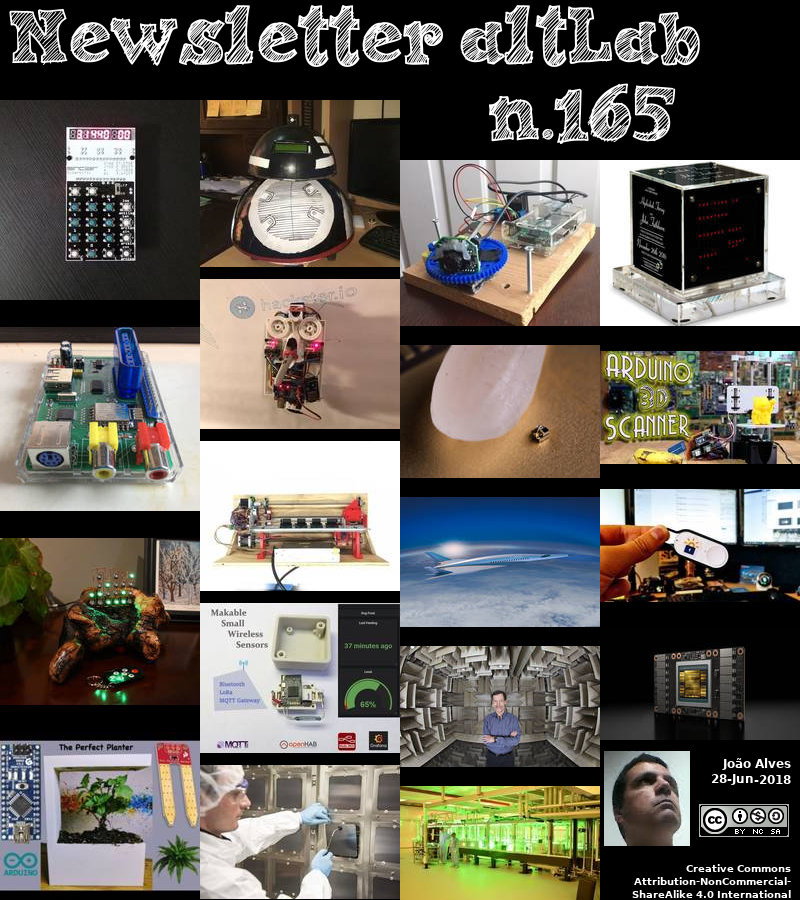
Editorial
Esta é a Newsletter Nº 165 que se apresenta com o mesmo formato que as anteriores. Se gostar da Newsletter partilhe-a!
Todas as Newsletters encontram-se indexadas no link.
Esta Newsletter tem os seguintes tópicos:
Faz hoje anos que nascia, em 1825, Emil Erlenmeyer. Este químico alemão ficou conhecido por contribuir para o desenvolvimento inicial da teoria da estrutura, formulando a regra de Erlenmeyer e projectar o Erlenmeyer, um tipo de frasco químico, que tem o seu nome.
Faz igualmente hoje anos que nascia, em 1875, Henri Lebesgue. Este Matemático francês desenvolveu uma teoria da integração, agora conhecida pelo seu nome. Ao estender o trabalho de Camille Jordan e Émile Borel no integral de Riemann, Lebesgue forneceu uma generalização que resolveu muitas das dificuldades em usar a teoria da integração de Riemann. Lebesque forneceu uma base para o desenvolvimento subsequente da teoria da integração e sua posterior aplicação no cálculo, na rectificação de curvas e na teoria da teoria trigonométrica. Ele também contribuiu noutros campos da matemática, incluindo teoria dos conjuntos, cálculos de variação e teoria das funções.
Faz também anos hoje que nascia, em 1926, Robert Ledley. Este físico e radiologista norte-americano inventou o scanner de diagnóstico de raios X - ACTA (Automatic Computerized Transverse Axial), a primeira máquina de tomografia computorizada (TC) de corpo inteiro que revolucionou o diagnóstico médico. O ACTA pode fazer uma análise tridimensional de todos os órgãos e partes do corpo numa série de imagens de secção transversal usando raios X finos e processamento de computador de alta potência dos dados recolhidos. Usando o ACTA, o diagnóstico de tumores é possível, mesmo dentro de grandes órgãos, e pode melhorar a radioterapia para o cancro.
Por fim, faz anos hoje que nascia, em 1936, Leon O. Chua. Este engenheiro electrotécnico norte-americano contribuiu para a teoria de circuitos não-lineares e a teoria da rede neural celular (CNN). Ele também é o inventor e homónimo do circuito de Chua, um dos primeiros e mais conhecidos circuitos a exibir um comportamento caótico, e foi o primeiro a conceber as teorias por detrás e postular a existência do memristor. Trinta e sete anos depois dele ter previsto a sua existência, um memristor de estado sólido foi criado por uma equipa liderada por R. Stanley Williams na Hewlett Packard.
Nesta semana que passou a Boeing apresentou o novo conceito de avião hipersónico para passageiros. Este irá possibilitar viagens intercontinentais de cerca de 2 horas. O conceito, juntamente com outras visões do futuro da Boeing, estarão em exibição na feira Farnborough Air em Julho.
Ainda esta semana foi finalmente anunciado o WPA3. A Wi-Fi Alliance finalmente introduziu este novo protocolo que irá ser a próxima geração de segurança Wi-Fi®, trazendo novos recursos para melhorar as protecções Wi-Fi em redes pessoais e corporativas. Com base na ampla adopção do WPA2 em mais de uma década, o WPA3 adiciona novos recursos para simplificar a segurança Wi-Fi, permitir autenticação mais robusta e fornecer maior força criptográfica para utilizadores de dados altamente confidenciais.
Finalmente ficámos também saber que o projecto Aquila do Facebook foi descontinuado. O projecto Aquila realizou dois voos de teste públicos de alto perfil de um drone protótipo, o primeiro dos quais em 2016 resultou em sérios danos à aeronave durante a aterragem. Agora, em vez de construir sua própria aeronave, o Facebook diz que agora se concentrará em trabalhar com parceiros em sistemas de entrega de Internet em alta altitude e em questões políticas relacionadas à garantia de espectro e ao estabelecimento de regras federais em torno da operação de tais sistemas.
Na Newsletter desta semana apresentamos diversos projetos de maker. É apresentada a revista MagPI Nº71 assim como as revistas newelectronics de 25 e 26 de Junho.
 João Alves ([email protected])
João Alves ([email protected])
O conteúdo da Newsletter encontra-se sob a licença  Creative Commons Attribution-NonCommercial-ShareAlike 4.0 International License.
Creative Commons Attribution-NonCommercial-ShareAlike 4.0 International License.
Novidades da Semana

Early Look: This aircraft concept shows a hypersonic vehicle for passengers
"Building the future at Boeing requires looking decades ahead at what could be possible, and innovating now to make it happen. That’s the impetus behind Boeing’s first passenger-carrying hypersonic concept that was debuted at the American Institute of Aeronautics and Astronautics conference in Atlanta this week. The passenger concept could have military or commercial applications; this is just one of several hypersonic vehicle concepts spanning a wide range of potential applications company engineers are studying. Engineers are working companywide to develop enabling technology will position the company for the time when customers and markets are ready to reap the benefits of hypersonic flight. “We’re excited about the potential of hypersonic technology to connect the world faster than ever before,” said Kevin Bowcutt, senior technical fellow and chief scientist of hypersonics. “Boeing is building upon a foundation of six decades of work designing, developing and flying experimental hypersonic vehicles, which makes us the right company to lead the effort in bringing this technology to market in the future.” Although Bowcutt can’t speculate when hypersonic flight for global travel will be a reality, he says it’s possible a hypersonic passenger vehicle could be airborne in 20 to 30 years." [...]

Wi-Fi Alliance introduces Wi-Fi CERTIFIED WPA3 security
"Next-generation Wi-Fi® security for personal and enterprise networks Wi-Fi Alliance® introduces Wi-Fi CERTIFIED WPA3™, the next generation of Wi-Fi® security, bringing new capabilities to enhance Wi-Fi protections in personal and enterprise networks. Building on the widespread adoption of WPA2™ over more than a decade, WPA3™ adds new features to simplify Wi-Fi security, enable more robust authentication, and deliver increased cryptographic strength for highly sensitive data markets. As the Wi-Fi industry transitions to WPA3 security, WPA2 devices will continue to interoperate and provide recognized security. WPA3 security continues to support the market through two distinct modes of operation: WPA3-Personal and WPA3-Enterprise. All WPA3 networks use the latest security methods, disallow outdated legacy protocols, and require use of Protected Management Frames (PMF) to maintain resiliency of mission critical networks. Key capabilities of WPA3 include: WPA3-Personal: more resilient, password-based authentication even when users choose passwords that fall short of typical complexity recommendations." [...]

High altitude connectivity: The next chapter
"Today nearly 4 billion people globally do not have access to the Internet. It’s why Facebook, along with many other companies and governments, is investing heavily to address the three key barriers to getting everyone, everywhere online: availability, affordability, and awareness. Part of that investment has been in developing next-generation connectivity technologies like Aquila, a high altitude platform station (HAPS) system. This has involved a lot of trial and error. When we started the Aquila program back in 2014, very few companies were involved in this area — and they were all working independently of one other. In addition, the only spectrum available for these platforms wasn’t suitable for broadband due to technical and geographical limitations." [...]
Outras Notícias
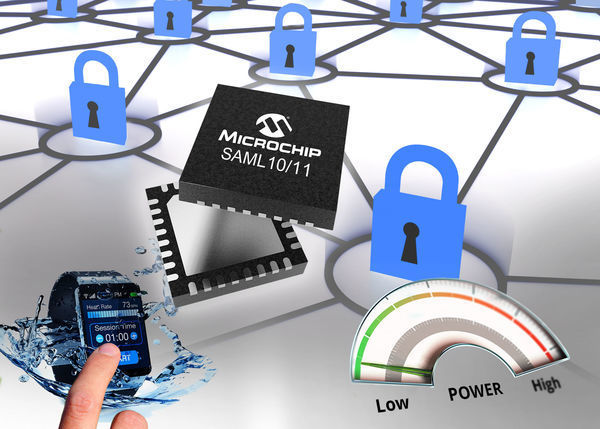
Create Secured IoT Endpoints with the First 32-bit MCU to Feature Robust, Chip-level Security and Arm TrustZone Technology
"New MCUs combine industry’s best-in-class low power consumption and water-tolerant, noise-immune capacitive touch With the booming growth of Internet of Things (IoT) endpoints, security is sometimes an afterthought for many designers, increasing the risk of exposing intellectual property (IP) and sensitive information. To address the growing need for security, the new SAM L10 and SAM L11 MCU families are now available from Microchip Technology Inc. (NASDAQ: MCHP). For more information visit www.microchip.com/SAML11. The new MCU families are based on the Arm® Cortex®-M23 core, with the SAM L11 featuring Arm TrustZone® for Armv8-M, a programmable environment that provides hardware isolation between certified libraries, IP and application code. Microchip enables robust security by including chip-level tamper resistance, secure boot and secure key storage that, when combined with TrustZone technology, is designed to protect customer applications from both remote and physical attacks. Both MCU families offer the industry’s lowest power consumption, as well as have capacitive touch capability with best-in-class water tolerance and noise immunity." [...]

Design Code Separately and Integrate Seamlessly with Dual-core dsPIC Digital Signal Controller
"dsPIC33CH family optimized for high-performance and time-critical, real-world embedded control System developers designing high-end embedded control applications can benefit from a new Digital Signal Controller (DSC) with two dsPIC® DSC cores in a single chip, now available from Microchip Technology Inc. (NASDAQ: MCHP). The dsPIC33CH has one core that is designed to function as a master while the other is designed as a slave. The slave core is useful for executing dedicated, time-critical control code while the master core is busy running the user interface, system monitoring and communications functions, customized for the end application. The dsPIC33CH is designed specifically to facilitate independent code development for each core by separate design teams and allows seamless integration when they are brought together in one chip. For more information visit: www.microchip.com/dsPIC33CH. The dsPIC33CH family is optimized for high-performance digital power, motor control and other applications requiring sophisticated algorithms." [...]
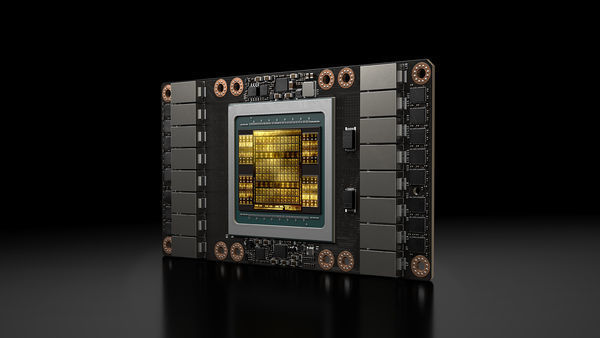
NVIDIA Tensor Core GPUs Accelerate World's Fastest Supercomputers
"NVIDIA announced today that the world’s top AI supercomputers are all powered by NVIDIA® Tensor Core GPUs, based on a new list of the world’s 500 fastest systems. AI supercomputers are uniquely capable of processing both traditional HPC simulations and revolutionary new AI workloads. The new AI supercomputers include the world’s fastest system and third-fastest systems, Summit and Sierra, both in the U.S. Tensor Core GPUs also power the fastest supercomputer in Japan, ABCI. The new systems reflect the broader shift to accelerators in the TOP500 list. GPUs now power five out of the world’s seven fastest systems, as well as 17 of the 20 most energy efficient systems on the new GREEN500 list. In addition, the majority of computing performance added to the TOP500 list comes from NVIDIA GPUs." [...]
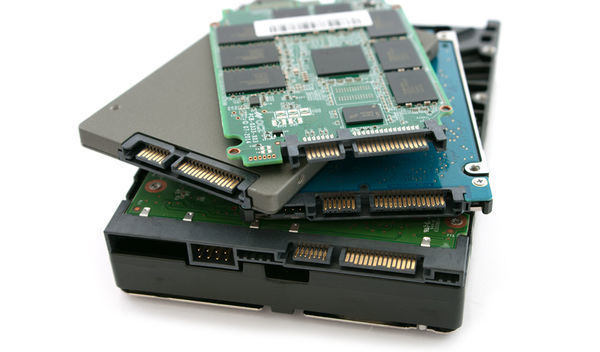
SATA-IO Expands Supported Features in Revision 3.4 Specification
"The Serial ATA International Organization (SATA-IO), the storage industry consortium dedicated to sustaining the quality, integrity and dissemination of the Serial ATA (SATA™) technology, announced the publication of the SATA Revision 3.4 Specification. The newest SATA specification introduces features that enable monitoring of device conditions and execution of housekeeping tasks, both with minimal impact on performance. The storage market continues to demand improvements in performance, reliability and compatibility. The industry standard group has added new features to the specification revision 3.4 so that SATA devices may offer improvements in these areas, including: • Durable /Ordered Write Notification: enables writing selected critical cache data to the media, minimizing impact on normal operations. • Device Temperature Monitoring: allows for active monitoring of SATA device temperature and other conditions without impacting normal operation by utilizing the SFF-8609 standard for out of band (OOB) communications. • Device Sleep Signal Timing: provides additional definition to enhance compatibility between manufacturers’ implementations." [...]

SiFive Unveils E2 Core IP Series for Smallest, Lowest Power RISC-V Designs
"Fully configurable with advanced feature sets allows for broad applications, including microcontrollers, IoT, wearables, and smart cards SiFive, the leading provider of commercial RISC-V processor IP, today announced the availability of its E2 Core IP Series, configurable low-area, low-power microcontroller (MCU) cores designed for use in embedded devices. The E2 Series extends SiFive’s product line with two new standard cores, the E21, which provides mainstream performance for MCUs, sensor fusion, minion cores and smart IoT markets; and the E20, the most power-efficient SiFive standard core designed for microcontrollers, IoT, analog mixed signal and finite state machine applications. Additionally, the company announced enhancements to its existing standard E3 and E5 Core IP Series. The SiFive E20 and E21 are designed for markets that require extremely low-cost, low-power computing, but can benefit from being fully integrated within the RISC-V software ecosystem. Fully compatible with the exact same software stack, tools, compilers and ecosystem vendors as other higher performance SiFive cores, the E2 Series enables these new markets to take advantage of the robust software ecosystem that has been exponentially growing since SiFive first introduced commercial RISC-V cores in 2016. Both cores are fully synthesizable and verified soft IP implementations that scale across multiple design nodes." [...]
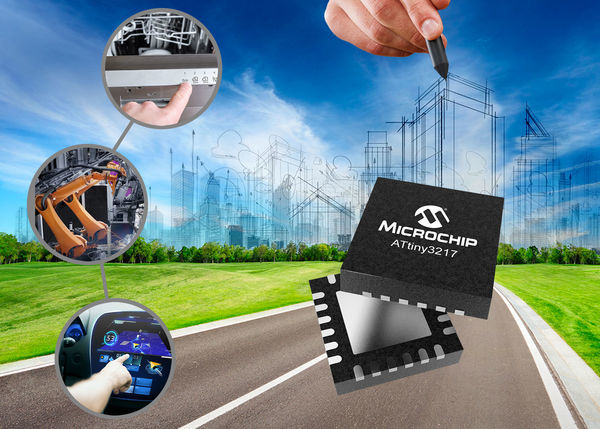
Increase Functionality in Sensor Nodes with New 8-bit tinyAVR MCUs
"ATtiny3217 and ATtiny3216 join Microchip’s tinyAVR family with largest memory in the series AVR® microcontrollers (MCUs) have long been used to create highly responsive sensor nodes because of their cost effectiveness and ease of implementation. To enhance the capability and responsiveness of applications in these settings, Microchip Technology Inc. (NASDAQ: MCHP) has expanded its tinyAVR MCU series to include two new devices with advanced analog features and the largest memory variant in the family. Designed for reliable operation in harsh environments, the devices come with built-in safety functions to help designers create robust and safe systems. Ideal for sensor applications including capacitive touch interfaces, the ATtiny3217 and ATtiny3216 bring the benefit of two Analog-to-Digital Converters (ADCs) that enable systems to implement touch control simultaneously with other analog measurements. One ADC can be used with the Peripheral Touch Controller (PTC) for touch signal acquisition, while the second one monitors other inputs such as thermistors and pressure sensors, or both ADCs can be used for faster sampling of different types of sensors. Additional benefits of the ATtiny3217 and ATtiny3216 MCUs include: Improved real-time performance and accuracy: The dual ADC can be used for synchronous sampling of analog signals, such as voltage and current, thus improving the overall system real-time performance and accuracy." [...]

Microsoft and DEWA bringing quantum computing to Dubai
"DEWA will work with Microsoft and access new quantum Microsoft Azure services to create quantum-inspired solutions to power energy optimization and improve sustainability efforts in Dubai and the United Arab Emirates The Dubai Electricity and Water Authority (DEWA) on Thursday announced plans to work with Microsoft Corp. to develop new quantum-based solutions to address energy optimization and other challenges where classical computers have serious limitations, making it the first organization outside the U.S. to participate in the Microsoft Quantum program. As part of the deal, Microsoft will work closely with DEWA to identify the challenges where quantum computing will have the greatest impact. Energy optimization, for example, requires far too much traditional computing power to identify the ideal balance of resources from different energy sources to meet ever-changing consumption needs in real time. As part of Dubai 10X (an initiative to use advances in technology to deliver new or existing services in radically different ways), DEWA wants to reimagine its role as a utility company by launching “Digital DEWA,” the digital arm of Dubai Electricity and Water Authority, and is leveraging Microsoft Quantum to help accelerate its goals. In addition, the two organizations will look at ways to support the Dubai EXPO 2020, an event that brings people from all over the world to share ideas. “We are delighted to work with Microsoft to bring the revolutionary power of quantum computing to Dubai, to achieve the vision of His Highness Sheikh Mohammed bin Rashid Al Maktoum, vice president and prime minister of the UAE and ruler of Dubai, to make Dubai the smartest and happiest city in the world." [...]
Ciência e Tecnologia

Engineer Creates New Design For Ultra-thin Capacitive Sensors
"As part of ongoing acoustic research at Binghamton University, Distinguished Professor Ron Miles has created a workable sensor with the least possible resistance to motion. The thin and flexible sensor is ideal for sensing sounds because it can move with the airflow made by even the softest noises and addresses issues with accelerometers, microphones and many other similar sensors. “The goal was to create a sensor that only resists gravity,” explained Miles. “The sensor needed to stay connected to the device but other than that, I wanted it to move with even the slightest sounds or movement of the air.” Being able to move with the air is how sensors are able to tell when a sound is present and which direction it is coming from. Miles made headway with acoustic sensors in 2017 by using spider silk dipped in gold as a thin, flexible sensor to make a microphone with remarkably flat frequency response. This sensor incorporated a magnet in order to convert the silk motion into an electronic signal." [...]

A multifunctional, multiscale, reconfigurable surface
"Composite surface has features that can move microparticles, mix droplets, repel biofilms and more An international team of researchers, led by Harvard University, have developed a dynamic surface with reconfigurable topography that can sculpt and re-sculpt microscale to macroscale features, change its friction and slipperiness, and tune other properties based on its proximity to a magnetic field. Made by infusing a magnetic fluid in a solid microtexture, the researchers demonstrated how the surface could be used to direct the movement and assembly of micro-scale particles, regulate the flow and mixing of millimeter-size droplets, or turn adhesive properties on and off at the macroscale. “Multifunctional materials capable of performing various tasks is a new, promising area of research,” said Joanna Aizenberg, the Amy Smith Berylson Professor of Materials Science and Professor of Chemistry & Chemical Biology at the Harvard John A. Paulson School of Engineering and Applied Sciences and senior author of the paper. “The demonstrated applications – new forms of reversible, hierarchical particle self-assembly, manipulation and transport of non-magnetic matter in a magnetic field by topography-induced hydrodynamic forces, precisely timed chemical reactions, and rewritable, spatial addressing of directional adhesion, friction, and biofilm removal – are only a small representative sample of ample possibilities this new concept opens up to the imagination.” Aizenberg is also Core Member of the Wyss Institute for Biologically Inspired Engineering at Harvard University. The research, published in Nature, was the result of an interdisciplinary collaboration between chemists, physicists, fluid mechanicists, materials scientists, applied mathematicians and marine biologists. The surface is nicknamed FLIPS, short for Ferrofluid-containing liquid-infused porous surfaces." [...]
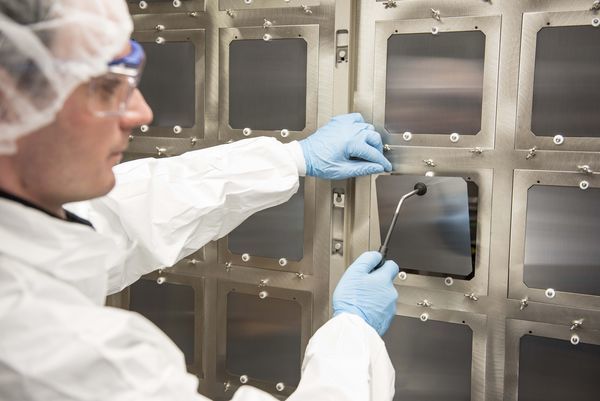
Oxford PV sets world record for perovskite solar cell
"Perovskite solar technology leader’s solar cell exceeds highest ever performing single-junction silicon solar cell The Perovskite CompanyTM, the leader in the field of perovskite solar cells, today announced a new, certified, world record for its perovskite based solar cell. Oxford PV’s 1 cm2 perovskite-silicon tandem solar cell has achieved a 27.3% conversion efficiency, certified by the Fraunhofer Institute for Solar Energy Systems ISE. This exceeds the 26.7% efficiency world record for a single-junction silicon solar cell. Frank P. Averdung, Chief Executive Officer at Oxford PV commented, “This result further validates the ability of perovskite to enhance the performance of silicon based photovoltaics. Continuing to improve the performance of photovoltaics is fundamental for sustaining the growth of solar generated electricity.” Dr Chris Case, Chief Technology Officer at Oxford PV added, “We are continuing to push our perovskite-silicon solar cell technology with a roadmap that extends beyond 30% efficiency, driving the world towards an all-electric future. Oxford PV counts on the support of development partners, suppliers and customers to deliver its perovskite solar technology.” Today’s record demonstrates the considerable progress the company has made in driving its perovskite solar solution closer to commercialisation." [...]
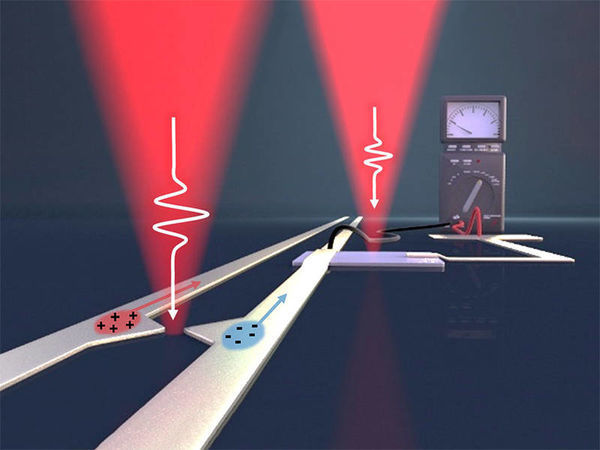
Closing the gap: On the road to terahertz electronics
"A team headed by the TUM physicists Alexander Holleitner and Reinhard Kienberger has succeeded for the first time in generating ultrashort electric pulses on a chip using metal antennas only a few nanometers in size, then running the signals a few millimeters above the surface and reading them in again a controlled manner. The technology enables the development of new, powerful terahertz components. Classical electronics allows frequencies up to around 100 gigahertz. Optoelectronics uses electromagnetic phenomena starting at 10 terahertz. This range in between is referred to as the terahertz gap, since components for signal generation, conversion and detection have been extremely difficult to implement. The TUM physicists Alexander Holleitner and Reinhard Kienberger succeeded in generating electric pulses in the frequency range up to 10 terahertz using tiny, so-called plasmonic antennas and run them over a chip." [...]

Solving The Challenges Of 'Flying Microgrids'
"Collaborative KU-MIT Research Team Working to Develop First Satellite Electrical Power System Benchmark Solar systems that capture, store and transmit solar power are a major focus of research across the world. However, the role of solar power systems used for solar-powered satellites that orbit our planet have received far less attention. As the role of satellites for communications, navigation, research and defense continues to grow, researchers from Khalifa University of Science and Technology (KU) and the Massachusetts Institute of Technology (MIT) say there is a need to address a number of unique challenges faced by satellite power systems. “Benchmarks play an important role in comparing systems to develop standard designs that achieve desired performance efficiencies. Small, ground-based electrical grids, otherwise known as microgrids, have benchmarks, but we cannot apply them to satellites,” explained Dr. Hatem Zeineldin, Professor of Electrical and Computer Engineering. He is part of a collaborative research team working to address this gap, made up of KU research engineer Samrat Acharya, KU MSc student Fatama Alshehhi, KU research engineer Omair Khan, KU research engineer Alex Tsoupos, KU Professor of Electrical and Computer Engineering Dr. Mohamed Elmoursi, KU Assistant Professor of Electrical and Computer Engineering Dr. Mohamed Al Hosani, KU Associate Professor of Electrical and Computer Engineering Dr. Vinod Khadkikar, MIT Professor of Electrical Engineering and Computer Science Dr. Steven Leeb, MIT Professor of Electrical Engineering Dr. James Kirtley, and MIT Professor of Electrical Engineering Dr. David Perreault." [...]
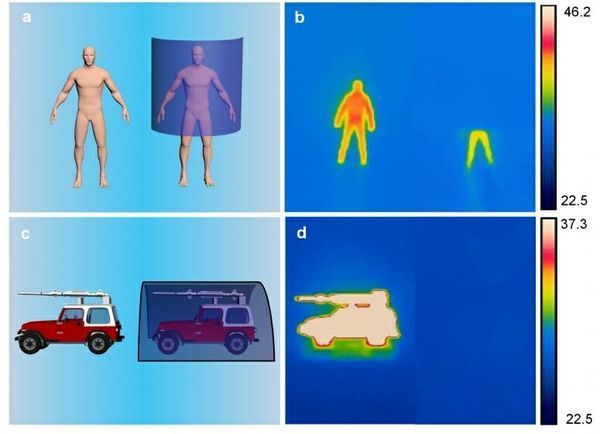
'Stealth' material hides hot objects from infrared eyes
"Infrared cameras are the heat-sensing eyes that help drones find their targets even in the dead of night or through heavy fog. Hiding from such detectors could become much easier, thanks to a new cloaking material that renders objects — and people — practically invisible. “What we have shown is an ultrathin stealth ‘sheet.’ Right now, what people have is much heavier metal armor or thermal blankets,” says Hongrui Jiang, professor of electrical and computer engineering at the University of Wisconsin–Madison. Warm objects like human bodies or tank engines emit heat as infrared light. The new stealth sheet, described this week in the research journal Advanced Engineering Materials, offers substantial improvements over other heat-masking technologies. “It’s a matter of the weight, the cost and ease of use,” says Jiang." [...]

Scientists Create Continuously Emitting Microlasers With Nanoparticle-Coated Beads
"Berkeley Lab-led team discovers right mix of nanocrystals and light to activate unique laser properties in 5-micron spheres Researchers have found a way to convert nanoparticle-coated microscopic beads into lasers smaller than red blood cells. These microlasers, which convert infrared light into light at higher frequencies, are among the smallest continuously emitting lasers of their kind ever reported and can constantly and stably emit light for hours at a time, even when submerged in biological fluids such as blood serum. The innovation, discovered by an international team of scientists at the U.S. Department of Energy’s Lawrence Berkeley Laboratory (Berkeley Lab), opens up the possibility for imaging or controlling biological activity with infrared light, and for the fabrication of light-based computer chips. Their findings are detailed in a report published online June 18 in Nature Nanotechnology. The unique properties of these lasers, which measure 5 microns (millionths of a meter) across, were discovered by accident as researchers were studying the potential for the polymer (plastic) beads, composed of a translucent substance known as a colloid, to be used in brain imaging. Angel Fernandez-Bravo, a postdoctoral researcher at Berkeley Lab’s Molecular Foundry, who was the lead author of study, mixed the beads with sodium yttrium fluoride nanoparticles “doped,” or embedded, with thulium, an element belonging to a group of metals known as lanthanides." [...]
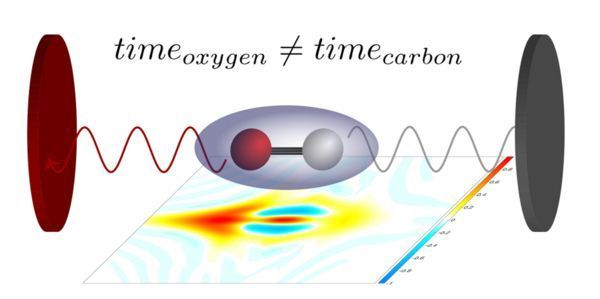
The photoelectric effect in stereo
"In the photoelectric effect, a photon ejects an electron from a material. Researchers at ETH have now used attosecond laser pulses to measure the time evolution of this effect in molecules. From their results they can deduce the exact location of a photoionization event. When a photon hits a material, it can eject an electron from it provided it has enough energy. Albert Einstein found the theoretical explanation of this phenomenon, which is known as the photoelectric effect, in Bern during his “year of wonders” 1905. That explanation was a crucial contribution to the development of quantum mechanics, which was under way at the time, and it earned him the Nobel Prize in Physics in 1921." [...]
Tracking cancer-cell development with "drinkable" electronic sensors
"Thanks to an unorthodox approach being proposed by EPFL researchers, patients may soon be able to track their illness simply by drinking a solution containing millions of tiny electronic sensors disguised as bacteria. Imagine being able to track the development of diseased cells in real time, simply by having patients drink a glass of water containing millions of tiny electronic biosensors. Once the microscopic sensors have been ingested, they would travel to diseased tissue in a patient’s body and send out a continuous stream of diagnostic data via telemetry. That’s the ambitious goal that Sandro Carrara from EPFL’s Integrated Systems Laboratory (School of Engineering/ Computer and Communication Sciences) and Pantelis Georgiou from Imperial College London have set for themselves. Such technology seems now possible thanks to advancements in nanofabrication processes for integrated circuits. Berkeley researchers had discussed a similar concept in 2013 where they suggested to sprinkle CMOS circuits into the human cortex to monitor neural activity." [...]
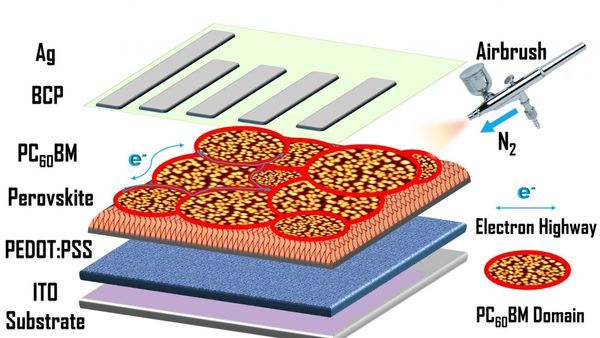
Researchers Solve Major Challenge in Mass Production of Low-Cost Solar Cells
"Spray Coating Could Make Perovskite an Inexpensive Alternative to Silicon for Solar Panels, Explains NYU Tandon School of Engineering’s André D. Taylor An international team of university researchers today reports solving a major fabrication challenge for perovskite cells — the intriguing potential challengers to silicon-based solar cells. These crystalline structures show great promise because they can absorb almost all wavelengths of light. Perovskite solar cells are already commercialized on a small scale, but recent vast improvements in their power conversion efficiency (PCE) are driving interest in using them as low-cost alternatives for solar panels. In the cover article published online today for the June 28, 2018 issue of Nanoscale, a publication of the Royal Society of Chemistry, the research team reveals a new scalable means of applying a critical component to perovskite cells to solve some major fabrication challenges. The researchers were able to apply the critical electron transport layer (ETL) in perovskite photovoltaic cells in a new way — spray coating — to imbue the ETL with superior conductivity and a strong interface with its neighbor, the perovskite layer. The research is led by André D. Taylor, an associate professor in the NYU Tandon School of Engineering’s Chemical and Biomolecular Engineering Department, with Yifan Zheng, the first author on the paper and a Peking University researcher." [...]
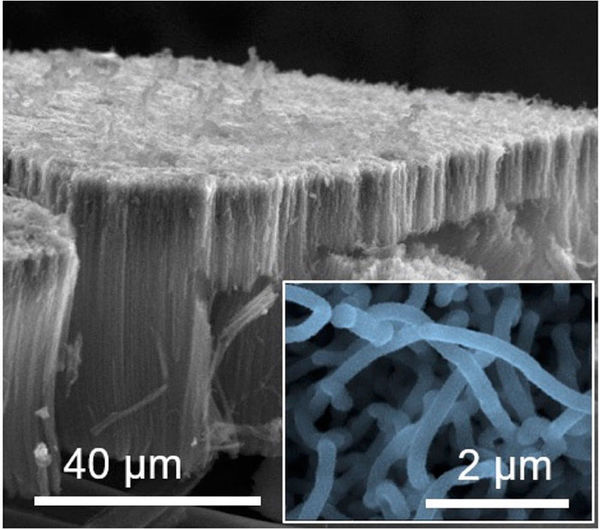
As Future Batteries, Hybrid Supercapacitors Are Super-Charged
"A new supercapacitor could be a competitive alternative to lithium-ion batteries. The Science A newly discovered supercapacitor has the highest energy density of any comparable system as demonstrated by a team of Molecular Foundry users and staff. These ultracapacitors can be charged and discharged repeatedly. The team’s new design approach also makes them very stable. The Impact The new supercapacitor performs far better than earlier versions. It is less likely to self-discharge or short circuit." [...]
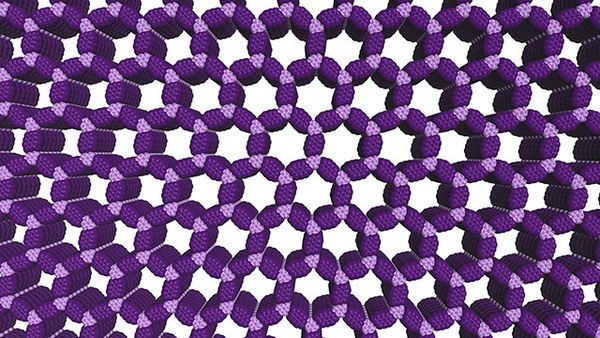
Northwestern researchers achieve unprecedented control of polymer grids
"Materials could find applications in water purification, solar energy storage, body armor Synthetic polymers are ubiquitous -- nylon and polyester, Teflon and epoxy, to name just a few. All are made up of long, linear structures that can tangle. Chemists have long dreamed of making polymers with two-dimensional, grid-like formations, but this goal has proven challenging. The first examples of such structures, now known as covalent organic frameworks (COFs), were discovered in 2005, but their quality has been poor and preparation methods are uncontrolled. Now a Northwestern University research team is the first to produce high-quality versions of these materials, demonstrate their superior properties and control their growth. The researchers developed a two-step growth process that produces organic polymers with crystalline, two-dimensional structures." [...]

U-M researchers create world's smallest 'computer'
"IBM’s announcement that they had produced the world’s smallest computer back in March raised a few eyebrows at the University of Michigan, home of the previous champion of tiny computing. Now, the Michigan team has gone even smaller, with a device that measures just 0.3 mm to a side—dwarfed by a grain of rice. The reason for the curiosity is that IBM’s claim calls for a re-examination of what constitutes a computer. Previous systems, including the 2x2x4mm Michigan Micro Mote, retain their programming and data even when they are not externally powered. Unplug a desktop computer, and its program and data are still there when it boots itself up once the power is back. These new microdevices, from IBM and now Michigan, lose all prior programming and data as soon as they lose power." [...]
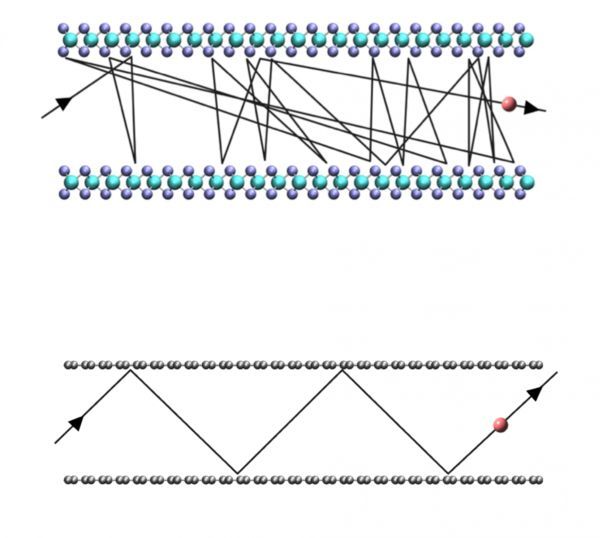
Atomic-scale ping-pong
"New experiments by researchers at the National Graphene Institute at The University of Manchester have shed more light on the gas flow through tiny, angstrom-sized channels with atomically-flat walls. Published in Nature, this new research shows that the channels allow gas through them at rates that are orders of magnitude faster than expected from theory. This will not only be important for fundamental studies on molecular flows at nanoscale but also for applications such as desalination and filtration. The reported anomalously-high flow is due to a phenomenon called ‘specular surface scattering’, which allows a gas to pass through the channel as if it were not there at all. To understand this effect, imagine a narrow gap between two parallel surfaces. If the surfaces are rough, light shone into the gap is scattered randomly." [...]
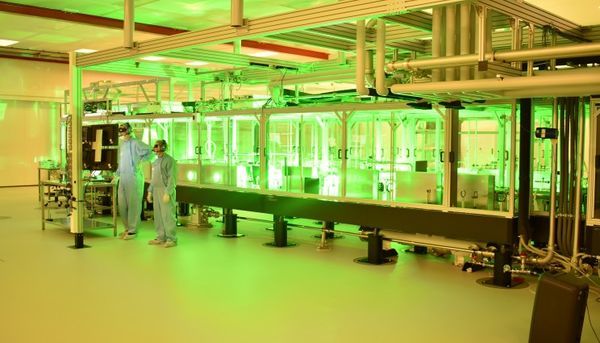
LLNL-developed petawatt laser system fully integrated, operational at ELI Beamlines
"After evaluation by an international peer review group, the L3-HAPLS advanced petawatt laser system has been declared fully integrated and operational at the ELI Beamlines Research Center in Dolní Břežany, Czech Republic. The group assessed the laser performance, determined that all performance parameters have been successfully met -- capable of reaching the 1 petawatt, 10 hertz (Hz) design specification -- and that the system is ready for integration with the experimental systems and first experiments. L3-HAPLS was designed, developed and constructed by Lawrence Livermore National Laboratory’s (LLNL) NIF and Photon Science (NIF&PS) Directorate and delivered to ELI Beamlines in June 2017. Since September 2017, an integrated team of scientific and technical staff from LLNL and ELI Beamlines has worked intensively on the installation of the laser hardware. “Developing an unprecedented laser system is an incredible undertaking -- as is moving that technology 6,000 miles across the Atlantic,” said Constantin Haefner, LLNL’s program director for Advanced Photon Technologies in NIF&PS. “This level of success was enabled by a smart, talented and capable team of international professionals who worked tirelessly to develop and deliver the next generation of petawatt lasers.” Leading the L3-HAPLS project allowed LLNL to draw on its decades of pioneering laser research and development and apply that expertise to advance new laser concepts important for its mission as a national laboratory." [...]
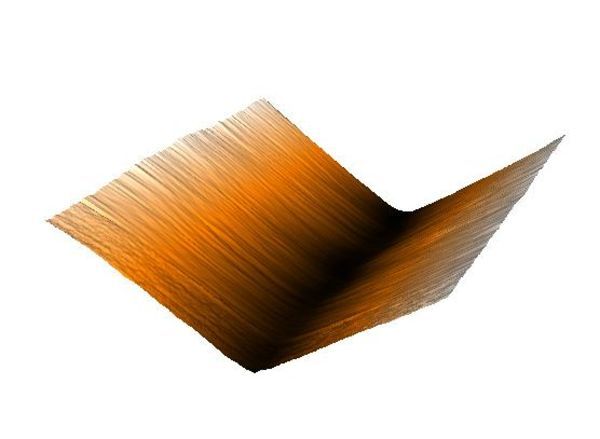
Research shows graphene forms electrically charged crinkles
"Gently compressed stacks of graphene form sharp crinkles that carry an electric charge, which could be useful in nanoscale self-assembly and other applications. Researchers from Brown University have discovered another peculiar and potentially useful property of graphene, one-atom-thick sheets of carbon, that could be useful in guiding nanoscale self-assembly or in analyzing DNA or other biomolecules. A study published in Proceedings of the Royal Society A demonstrates mathematically what happens to stacks of graphene sheets under slight lateral compression — a gentle squeeze from their sides. Rather than forming smooth, gently sloping warps and wrinkles across the surface, the researchers show that layered graphene forms sharp, saw-tooth kinks that turn out to have interesting electrical properties. “We call these quantum flexoelectric crinkles,” said Kyung-Suk Kim, a professor in Brown’s School of Engineering and the paper’s senior author. “What’s interesting about them is that each crinkle produces a remarkably thin line of intense electrical charge across the surface, which we think could be useful in a variety of applications.” The charge, Kim says, is generated by the quantum behavior of electrons surrounding the carbon atoms in the graphene lattice." [...]
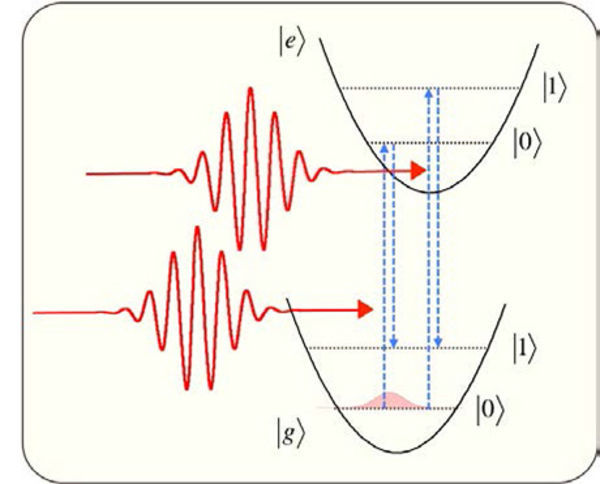
Control of quantum state of optical phonon in diamond induced by ultrashort light pulses
"Ultrashort Light-pulse-induced vibrations of atoms in a lattice, called optical coherent phonons, have been controlled in various materials. However, different experiments demonstrating such control have been explained differently through empirical theories, and a unified theory based on quantum mechanics is lacking. Scientists at Tokyo Institute of Technology successfully formulated a unified theory for this phenomenon and experimentally verified it in diamond, the optical phonons of which have great potential for application in quantum information technology. When extremely short optical pulse enters a solid, the atoms in its lattice start vibrating. Collectively, such vibrations of atoms exhibit both wave-like and particle-like behavior, and in quantum mechanics, these vibrations are called coherent optical phonons because they are induced by light and oscillate in phase. Phonons can determine various physical properties of solids, such as thermal and electrical conductivities." [...]

Quantum Leap in Computer Simulation
"Physicists have successfully run the largest quantum computing simulation to date, a key step in becoming quantum-ready If a quantum computer were a racing car it wouldn’t so much speed past a Formula One, it would simply take a private shortcut to appear at the finishing line just after the starting gun fires. And if you walked over to look under the hood to see how it worked, the engine would promptly collapse to just one random component, like a sparkplug. This is the weirdness of the quantum world where the normal laws of physics at the atomic level become, as Einstein put it, “spooky.” A quantum computer exploits quantum physics to rapidly uncover the right answer to a problem by sifting through and adjusting probabilities, while a classical computer will be burning up memory and time looking at each potential answer in turn. But University of Melbourne physicists have shown there’s plenty of life yet in classical computers. They have set a new world record in simulating quantum power on a classical computer, demonstrating more quantum data crunching grunt than any of the existing small-scale quantum computer prototypes. SIMULATING QUANTUM TO UNDERSTAND IT It means scientists have a powerful new simulation tool to capture and understand the quantum state and develop quantum-computing software." [...]
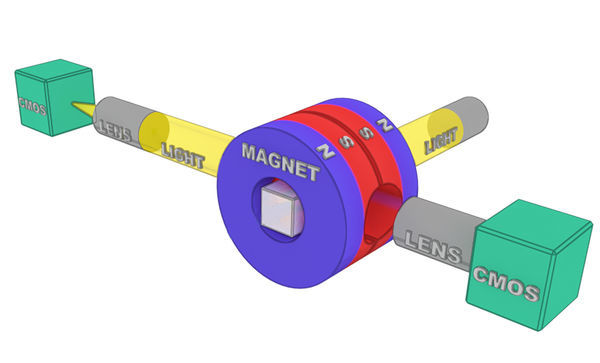
Experiments of the Russian scientists in space lead to a new way of 3D-bioprinting
"Thanks to the research of magnetic levitation in the conditions of microgravity, a new technology for 3D printing of biological tissues was developed. In the future, this technology will help to create radiation-sensitive biological constructs and repair damaged tissues and human organs. The results are published in Biofabrication. The technology is based on the results of the experimental studies which were supported by Russian Science Foundation (RSF). There are many methods of 3D-bioprinting. Most of them use a certain layer-by-layer framework of the biological tissues." [...]
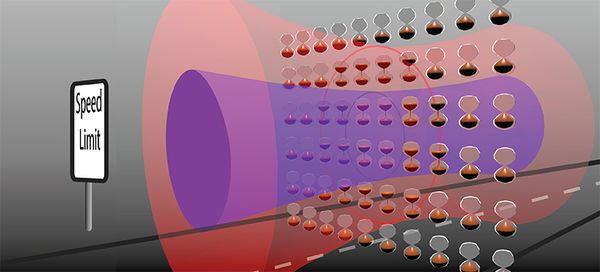
How smart technology gadgets can avoid speed limits
"Speed limits apply not only to traffic. There are limitations on the control of light as well, in optical switches for internet traffic, for example. Physicists at Chalmers University of Technology now understand why it is not possible to increase the speed beyond a certain limit – and know the circumstances in which it is best to opt for a different route. Light and other electromagnetic waves play a crucial role in almost all modern electronics, for example in our mobile phones. In recent years researchers have developed artificial speciality materials – known as optomechanical metamaterials – which overcome the limitations inherent in natural materials in order to control the properties of light with a high degree of precision. For example, what are termed optical switches are used to change the colour or intensity of light." [...]
Documentação
A documentação é parte essencial do processo de aprendizagem e a Internet além de artigos interessantes de explorar também tem alguma documentação em formato PDF interessante de ler. Todos os links aqui apresentados são para conteúdo disponibilizado livremente pelo editor do livro.

The MagPI 71
"We learn how to get Android up-and-running on a Raspberry Pi. Turn your Raspberry Pi into a touchscreen device, install apps, and control electronics. Plus! Build a fully working weather station that tracks temperature, rainfall, and wind speed/direction. We love this project. It combines off-the-shelf components, sensors, and code to keep an eye on the climate." [...]
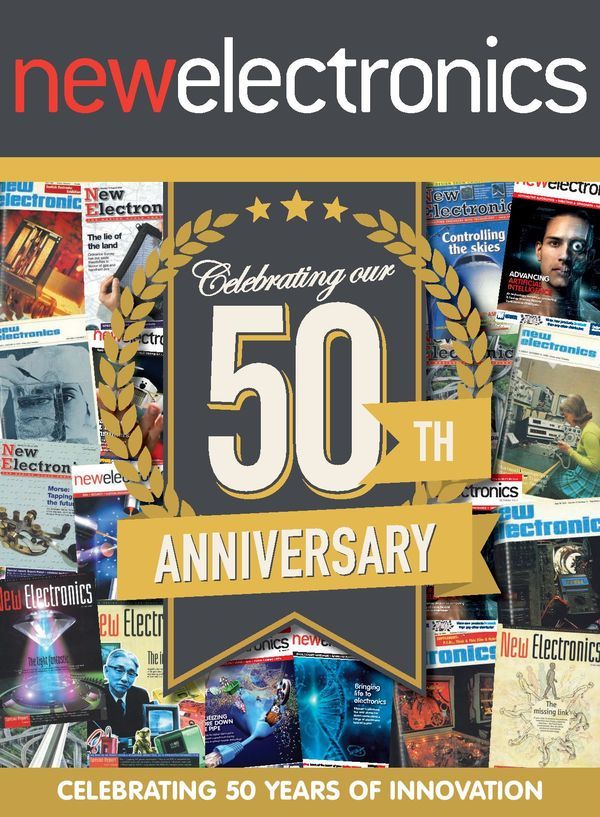
newelectronics 25 Junho 2018
"New Electronics is a fortnightly magazine focusing on technological innovation, news and the latest developments in the electronics sector. Downloadable as a digital page turner or pdf file, or offered as a hard copy, the New Electronics magazine is available in a format to suit you. " [...]
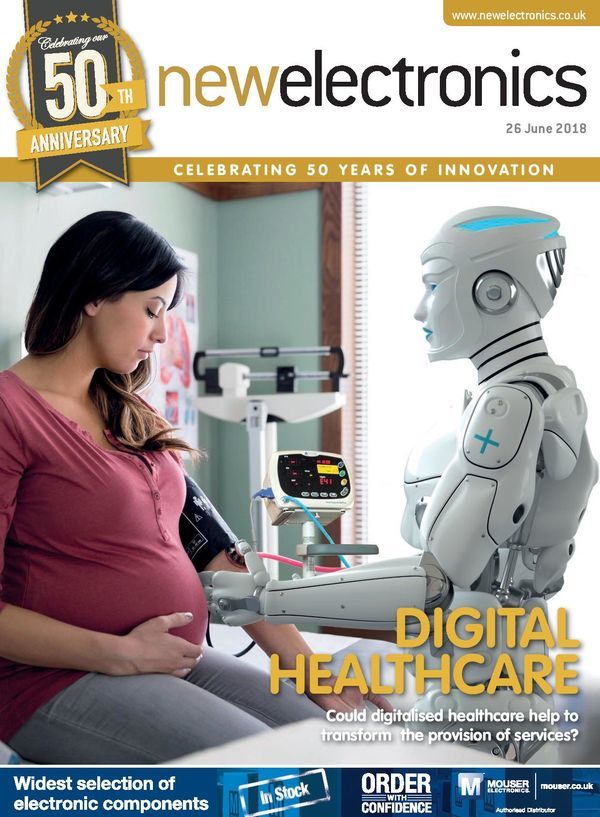
newelectronics 26 Junho 2018
"New Electronics is a fortnightly magazine focusing on technological innovation, news and the latest developments in the electronics sector. Downloadable as a digital page turner or pdf file, or offered as a hard copy, the New Electronics magazine is available in a format to suit you. " [...]
Projetos Maker
Diversos Projetos interessantes.

3D Digital Sand
"This project is sort of a continuation of my DotStar LED Cube where I used SMD LEDs attached to glass PCBs. Shortly after finishing this project, I came across the animated LED sand by Adafruit which uses an accelerometer and a LED matrix to simulate the movement of grains of sand. I thought it would be a nice idea to extend this project into the third dimension by just building a bigger version of my LED cube paired with an accelerometer. I also wanted to try casting the cube in epoxy resin. " [...]

I2C Design Mathematics: Capacitance and Resistance
"Learn about I2C and some of the design challenges that comes with it, including logic thresholds, factors that affect capacitance, and minimum and maximum pull-up resistance. This article covers what variables affect the capacitance of your bus. It also looks at the mathematical calculations used to size the pull-up resistors and determine the maximum length of circuit traces. Let's start by discussing what I2C actually is. " [...]
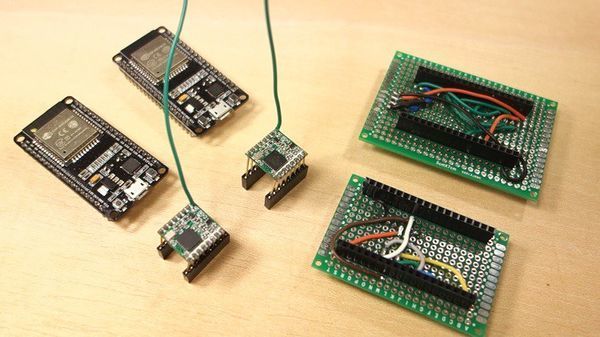
ESP32 with LoRa using Arduino IDE - Getting Started
"In this tutorial we’ll explore the basic principles of LoRa, and how it can be used with the ESP32 for IoT projects using the Arduino IDE. To get you started, we’ll also show you how to create a simple LoRa Sender and LoRa Receiver with the RFM95 transceiver module. " [...]
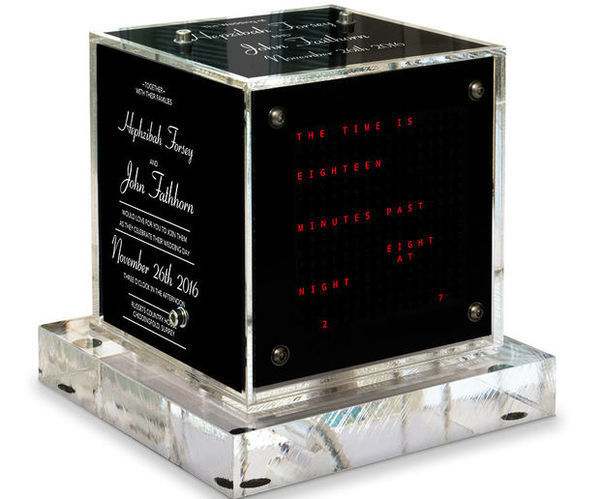
Arduino Word Clock Mini
"Arduino Word Clock Mini- Anniversary Clock Relatively easy to build Word Clock using a Arduino Nano and four MAX7219 32mm Dot Matrix Display ModulesChoice of styles, picture frame or Perspex cube with various base options. Specs Mini Arduino Word Clock with minute resolution of time in words and linear display of seconds. Uses an Arduino Nano and Four MAX7219 32mm Dot Matrix Displays giving 256 LEDs the same as my large Word Clock There are modes, digital clock, analogue clock, temperature & humidity, & also three games, Game of Life, Simon & Tetris. The clock can be stand alone or run as a slave off a Master Clock if required. In stand alone mode the clock runs off it's built in temperature compensated real time clock with an accuracy of 2ppm from 0C to +40C When running as a slave off a Master Clock time is synchronised on every 30 seconds past the minute. There is an option for PIR/Microwave Radar Sensor control so the clock automatically turns off when no one is in the room." [...]
Wi-Fi Controlled 4-Wheeled Robot
"For this project, we will be developing a 4-Wheeled Robot using ESP8266 which will be controlled over a Wi-Fi Network. The robot can be controlled from an ordinary internet browser, using a HTML designed interface or also from an android mobile application. ESP8266 chip is a powerful & cheap microcontroller, which is not only easy to use but also comes with onboard Wi-Fi connectivity. This is just the perfect chip to control robots remotely from your computer or mobile device. To incorporate this chip into our project we can use a variety of development boards based on this microcontroller. 1." [...]
Ball Tracking 180 Camera
"Welcome to my first project! I'm excited to share what I've made and showing you the steps to build your own tracking camera. This project was made possible using the OpenCV library in conjunction with Python. " [...]

LoRa-Tooth: Small BLE Sensors Over WiFi & LoRa Gateways
"Small, cheap, low-powered sensors are still a challenge to make. LoRa-Tooth uses $6 BLE modules to make untethered sensors with long range. Today, we have a lot of tools for building wireless devices. The ESP8266 is probably on the top of the popularity list. It ticks off a few important requirements Accessible: really cheap, lots of people can afford the $4 ESP8266 on ebay Community: large ecosystem of sensors and peripheral support because of Arduino Integration: easy to integrate into other platforms using protocols like MQTT Low Complexity: Easy to use IDE, not much tool chain setup Hardware exists, and in useful form factors (easy to build with, as long as it's wall-powered) All of these factor contribute to maximizing "makability". The ESP8266 and other WiFi microcontroller boards make it easy to build IoT devices when size and power consumption isn't a factor." [...]

Let's Encrypt is only a click away
"I've had a pretty chaotic few weeks and come weekend I like to chill out and tinker with little projects on my backlog. Months ago I bought some Amazon Dash buttons with every intention of using them but never actually getting around to it. It's time to change that and what better than integrate one of them with Let's Encrypt! Weekend Project I've always loved tinkering around with technology and I love little weekend projects to take my mind off work. I recently setup a Raspberry Pi to act as a DNS filter on my network using PiHole which was a great short project and something to have fun with that was also useful. I wanted to follow a trend here and finally put the Amazon Dash buttons I bought to good use." [...]

DIY Function Generator (ICL8038) 0 Hz - 400Khz
"Function Generators are very useful tool in electronics bench,but it can be quite expensive, but we have many options to build it cheaply. In this project we use ICl8038. " [...]

noMad - Open Source Self-Assembly System
"Self-assembling modular robotics utilizing machinic behaviour & real-time decision making to enable architecture with a sensory system. noMad proposes a self assembling system that marks a shift from built environment as a finite lifecycle construct to autonomous, non- finite and real-time solutions to adapt dynamically to its environment. noMad aims to enable architecture with a sensory system, localizing decision making by self-aware unit to unit communication instead of a deterministic, superimposed building plan. Anchored in the world of self-structuring polyhedra, noMad is based on principles of synergetics, the study of geometry in transformation and the impact of a local change on its global systems behaviour: a single unit can autonomously change shape, shifting its state by a simple rotational translation from one polyhedra to the other. noMad is operating on distinct scales of intelligence and autonomy, each autonomously self-assembling to the next higher order of organisation – from a highly mobile, nomadic state to high population spatial collective. noMad proposes a behavioural fabrication system that marks a shift of our build environment as a finite lifecycle construct, but is instead looking for autonomous, non-finite and real-time solutions to adapt dynamically to the demands of its environment - constantly restructuring itself." [...]

Smart Motor Driver for Robotics
"This motor driver is designed to be interfaced from a host microcontroller by I2C and be able to control the motor with a PID autonomously. This is a smart motor driver designed to run a Pololu micro gearmotor, the objective of this board is to be able to implement a PID control over this motors with the corresponding RPM feedback using a hall effect sensor. So it must have his own microcontroller and H bridge to be capable of do the work by itself. The host microcontroller (or any system that can use I2C) will communicate by I2C in order to give the commands to the smart driver module, this includes speed and direction of the motor. The module will automatically implement the PID to maintain the speed and apply more/less power in the motor to archive that. Also the control module will be capable of driving the motor for a desired distance and then stop when is reached." [...]
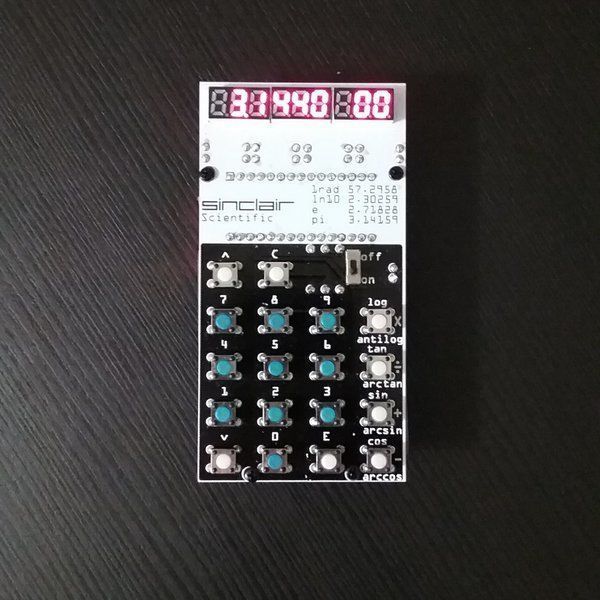
Sinclair Scientific Calculator Emulator
"A register level TMS0805 CPU emulator on an Arduino Nano runs the original 320 instruction calculator program. A custom PCB houses it all. Understanding the architecture of past, simpler CPUs is important to learn how to create future devices. This project implements an accurate emulation of the Sinclair Scientific Calculator. Most of the display glitches are accurately duplicated. The components in this project are easily sourceable, thus it should be able to be replicated." [...]

DIY Braille Embosser
"This project started when I met Alvino. He is originally from the Bahamas and he was born unable to see. Today Alvino has migrated to Canada where access to braille embossers is subsidized by the government, but still they’re expensive, and repairs are costly. I started to think about building a machine for him to read music as he plays the accordion. The initial idea led me to think about a system of pins and a rotary encoder to build a new kind of embosser. Commercial machines emboss the paper by impacting it all at once." [...]

BASIC Engine
"The BASIC Engine is a very low-cost single-board home computer with advanced 2D color graphics and sound capabilities, roughly comparable to late-1980s or early-1990s computers and video game consoles. It can be built at home without special skills or tools and using readily available components for under 10 Euros in parts, or mass-produced for even less. " [...]
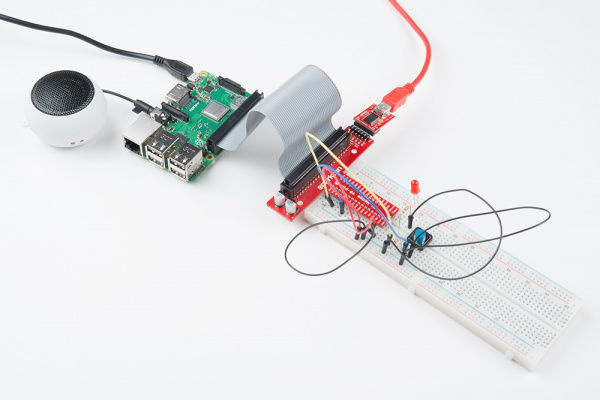
Python Programming Tutorial: Getting Started with the Raspberry Pi
"The Raspberry Pi is an amazing single board computer (SBC) capable of running Linux and a whole host of applications. Python is a beginner-friendly programming language that is used in schools, web development, scientific research, and in many other industries. This guide will walk you through writing your own programs with Python to blink lights, respond to button pushes, read sensors, and log data on the Raspberry Pi. " [...]
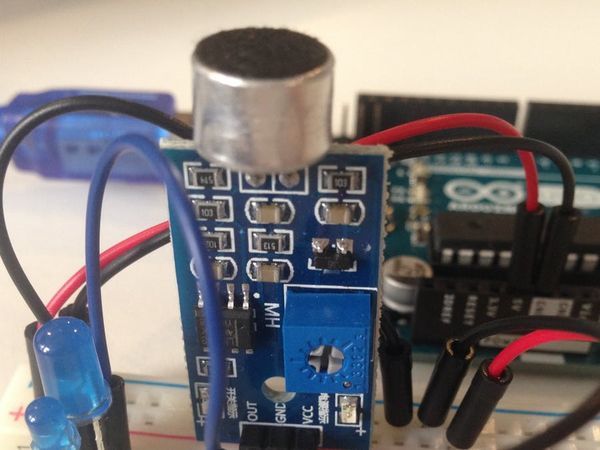
Arduino Whistle Command Recognition
"A part Arduino, part Java project that aims to recognize compound whistle commands, e.g. to activate a fan, or even steer a drone. Story Last March I went looking for inspiration to start a new, exciting Arduino project. Picky as I am, I wanted something (a) low-cost, (b) original, and (c) with an actual application in the real world. I went through a couple of mediocre ideas until I saw this guy on YouTube that had recreated Yondu’s arrows from the Guardians of the Galaxy movies. The project focused mostly on the arrows, which launched using fireworks at a single whistle (and probably any loud sound)." [...]
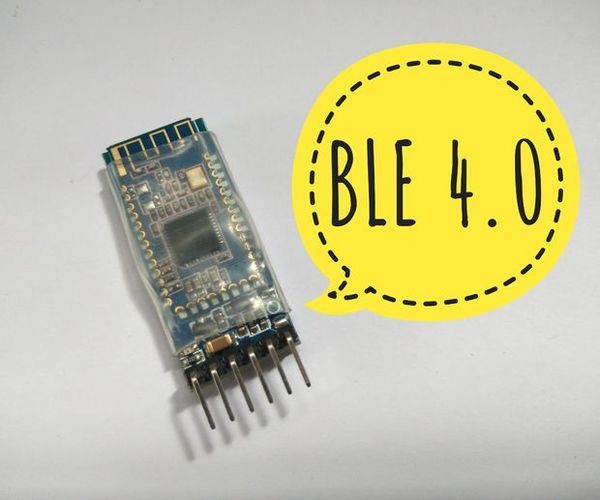
Control Your Projects With Bluetooth Low Energy.
"In this Instructable I'll show you how to get started with Bluetooth Low Energy and and How you can control your projects with it. This will be basic and I'll try to keep it simple for beginners. I'll be using AT-09 BLE v4.0 which is a HM-10 compatible Bluetooth module. BLE stands for Bluetooth Low Energy , It is based on Bluetooth 4.0 technology. So this module won't work with older phones. Click Here to know more about BLE." [...]

Knight Rider LED T Shirt
"This is a T Shirt with sewed on LEDs which are powered by LilyPad Arduino main board and a LilyPad coin cell battery holder which can provid with up to 9v batteries, connected by a conductive thread. " [...]

LED Logo Sign
"This project was created by the BuildClub at the NewMakeIt makerspace in Newmarket, Ontario, Canada. We wanted to demonstrate various skills and utilize various pieces of equipment available to members including the CNC, laser cutter, electronics lab and paint booth. This project demonstrates the technique to make a stunning and impressive LED logo that will delight your friends and/or customers. We utilized the design of our makerspace logo, but you can design one for your own needs. " [...]

OLED Tutorial | Convert SPI to I2C
"In this tutorial, we are going to learn about OLED displays. Which can be very easily interfaced with Arduino and can display important parameters for your project, and see how to convert these screens from SPI to I2C, So let's get started! " [...]
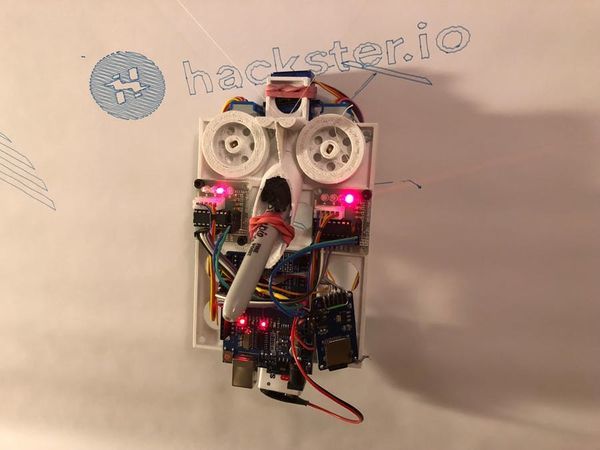
Stringent, the $15 Wall Plotter
"High accuracy wall plotting at minimal cost, enrich all the whiteboards around you with surprising artwork! Story Background I don't quite remember when it started, but I think around 1999 or so. Me and a friend that was into everything robotics and electronics was discussing building a robot for drawing on whiteboards. Of course we never had time to do anything serious back then, the ecosystem for hobbyist micro controllers was not what it is today. In 2002 my friend showed me the awesome work of Jürg Lehni and Uli Franke - Hektor. I was very pleased to see something similar to what we had been dreaming to build actually be constructed and shared with the world!" [...]

Smart Robot
"A robot is a machine, especially one programmable by a computer, capable of carrying out a complex series of actions automatically. With the advancement of technology the tasks done by humans in their daily life are being automated to make the task easier and more efficient. Volvic has been designed for this very purpose. It has been created by merging various technologies into one so that all the help required can be found in one place. Volvic was an inspiration of BB-9E from the movie star wars. Ever since I've watched that movie, I wanted to have one." [...]
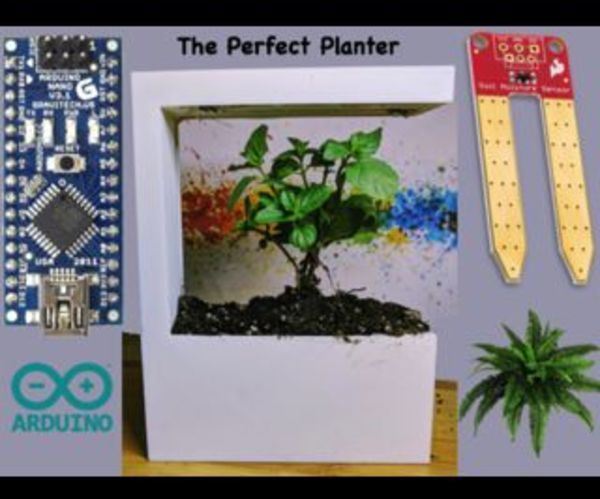
Perfect Planter - the Smartest Planter You Have Ever Seen
"This planter is probably one of the smartest planters you have ever seen. All in it's sleek and modern design, this planter boasts a soil sensor that detects when your soil is dry. When it is dry, a peristaltic pump turns on and automatically waters your plants for any amount that you like. Now, that is not all. On the top and the side, there is a grow light that will be on as long as the planter is plugged into an outlet. The plug is a dc barrel jack and this project includes the specific cable." [...]
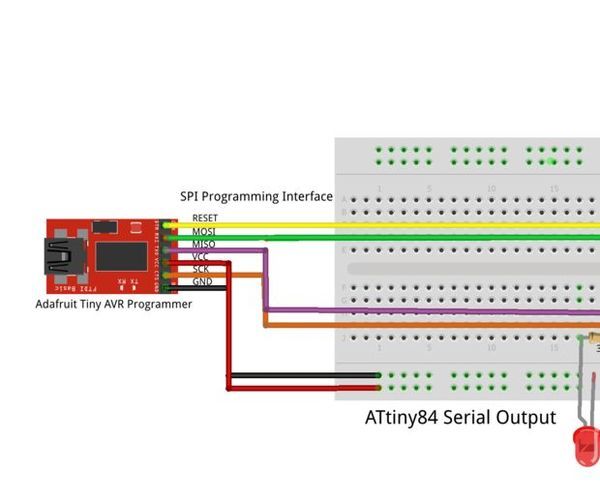
ATtiny84/85 Transmit Only Serial Output
"This instructable corrects/updates/amends a previous instructable which used the SoftwareSerial class to implement serial output for the Atmel ATtiny84 and ATtiny85 devices. There are a couple of significant issues associated with use of the SoftwareSerial class: It requires use of 2 pins, 1 for transmit and 1 for receive, even though serial output requires only transmit It uses a Pin Change interrupt for receive, therefore tying up a device Port. In fact, it allocates ALL the device ports to the receive pin change ISR.Fortunately, Nick Gammon modified the SoftwareSerial class to create a transmit only version, SendOnlySoftwareSerial, which requires only 1 device pin and no interrupts. This instructable follows the steps of the previous SoftwareSerial instructable pointing out the differences in use of the SendOnlySoftwareSerial class for serial output. Differences are highlighted in red; the original instructable is referenced where text/procedures are the same. " [...]
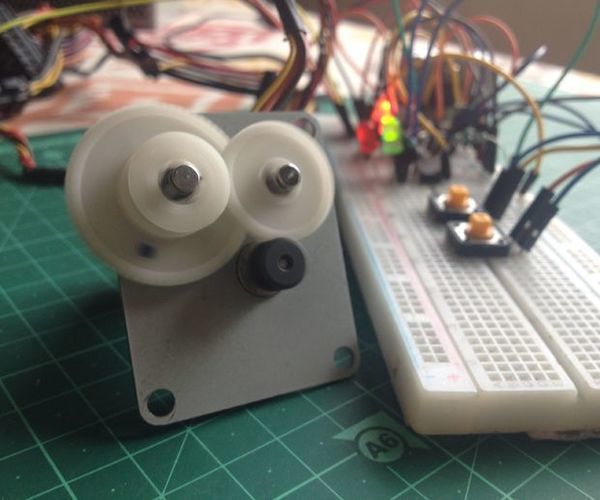
Stepper Motor Speed and Direction Control Without a Microcontroller
"In one of my previous Instructables, I showed you how to control a stepper motor's speed using a 555 timer. This project is an upgrade of that one and you will get to know how to control the motor's direction using another 555 timer IC. So, without any further ado, let's get started! " [...]

Driftwood Binary Clock
"Binary clocks have always attracted my attention and here is my version. There are a number of design elements that I believe sets it apart from other variants described on Instructables and other internet sites: Addressable RGB LEDs have been mounted on a copper frame that is external to the body that houses the electronics. An IR remote is used to set the time / alarm, snooze the alarm, select a display colour. The alarm tone is able to be easily personalised. Its in a piece of driftwood! !The use of the external frame to support the LEDs was due to how much I liked the completed look of the display." [...]
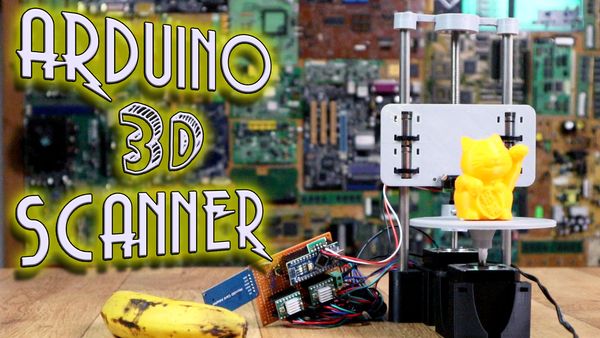
3D Scanner - Arduino + Step motors
"What’s up my friends, welcome back. Almost all of my DIY project have a 3D printed case of some sort of printed part. To print an object, you first need the 3D file. You have the file, you print the object. This project will do just the opposite, you have the object you get the 3D file. This machine should be able to 3D scan small objects with dimensions up to 13cm in the x and Y directions." [...]
That's all Folks!


